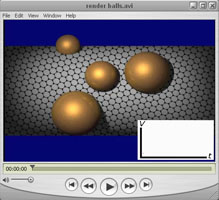Zettl Group Page |
Research Highlights
|
Probing Nanoscale Solids at Thermal Extremes: Supplementary materials
G.E. Begtrup, K.G. Ray, B.M. Kessler, T.D. Yuzvinsky, H. Garcia, and A. ZettlDepartment of Physics, University of California at Berkeley
Center of Integrated Nanomechanical Systems, University of California at Berkeley
Materials Sciences Division, Lawrence Berkeley National Laboratory
Berkeley, CA 94720, U.S.A.
The following media files are intended for public access. Please contact A. Zettl or G. Begtrup for permission before reproducing any of these images, videos, or audio files or alterations of them. All rights reserved ©2007.
Introduction
We have developed a platform for studying the atomic scale properties of materials at thermal extremes, reaching temperatures in excess of 4,000K. We find that carbon nanotubes are thermally stable to 3,200K, nearing the temperature of sunspots, and exceeding the breakdown temperature of the other common allotropes of carbon, graphite and diamond. Furthermore, we found high electrical and thermal conductivities of nanotubes from room temperature up to high temperature failure, implying far reaching applications in extreme conditions.
As a further application, we use these high temperature carbon nanotube heaters to study the electrical and thermal conductivity, and thermal stability (including melting point and sublimation point) of individual nanoscale objects. We perform real-time atomic resolution imaging of the nano-objects as they evolve in time/temperature. We can literally see how the atoms of the material shift and how the material falls apart, and know exactly at what temperature what happens, and determine the thermal/electrical transport properties of the object for each configuration.
Videos
If you use any of the following videos, please include the credit "Courtesy Zettl Research Group, Lawrence Berkeley National Laboratory and University of California at Berkeley."
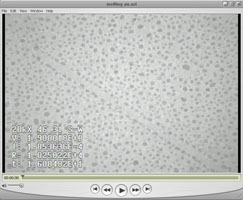
|
Our high temperature nanoscale test platform allows us to observe the evolution of a single nanotube in real time inside a high resolution transmission electron microscope. This series of images shows a nanotube traversing the video from top left to bottom right. Decorating the nanotube are gold nanoparticles (dark particles) that act as local nanoscale temperature sensors. As we drive increasing current through the nanotube, these nano-thermometers melt and evaporate (disappear) to reveal the temperature profile of the system. Watch the system evolve. Nanotube heating up (Quicktime,
2.3 MB) |
|
Rendition of small gold nanoparticles melting on a nanotube surface. The melting temperature of particles in this size scale (few nanometers) vary strongly with particle diameter. The nanoscale test platform is used to measure the this effect. As we increase the voltage applied to the nanotube, the temperature increases. We find that smaller particles melt at lower temperatures (applied voltages). Nanoparticle melting off of a nanotube heater (Quicktime 1.9 MB) |
Still Images
If you use any of the following images, please include the credit "Courtesy Zettl Research Group, Lawrence Berkeley National Laboratory and University of California at Berkeley."

|
The nanoscale thermal test platform consists of an electron transparent membrane, a sample (in this case a nanotube) with electrical contacts, and nanoparticle thermometers. As the sample is heated, the particles melt first in the center of the nanotube and then evaporate. As the sample continues to heat, this isothermal line defining the local temperature fans out across the sample, as seen in the above video. Test platform
schematic
(TIFF 4.6 MB) |
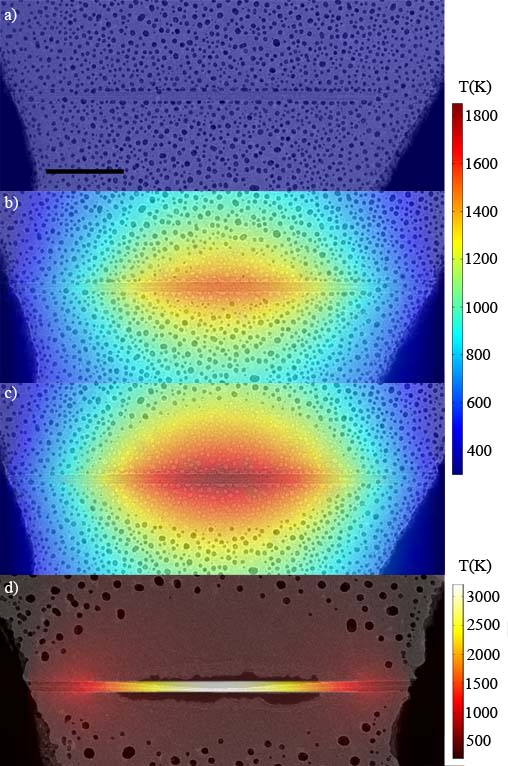
|
As shown in the above video, as the nanotube heats up, the nanoparticle thermometers move away from the hot center of the device. We model the temperature and compare to the isothermal "melting front" obtained from transmission electron microscopy. This series of frames shows the extreme heating and eventual failure at 3200K. Heating a nanotube
(TIFF 4,6 MB) |
Art
If you use any of the following videos, please include the credit "Courtesy Zettl Research Group, Lawrence Berkeley National Laboratory and University of California at Berkeley."
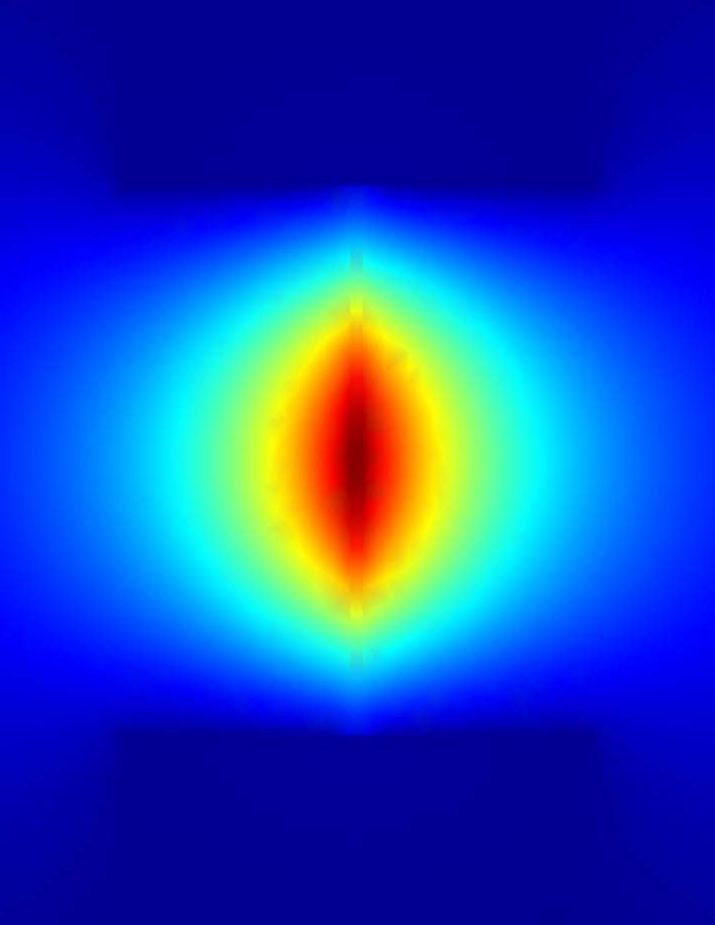
|
This simulation shows the modeled temperature of the nanotube device. Nanotube temperature simulation (TIFF
7.8 MB) |
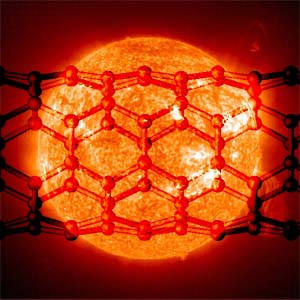
|
Nanotube Solar Art by Gavi Begtrup. Solar image courtesy of SOHO/EIT consortium. SOHO is a project of international cooperation between ESA and NASA. Nanotube Solar Art
(TIFF 1.1 MB) |
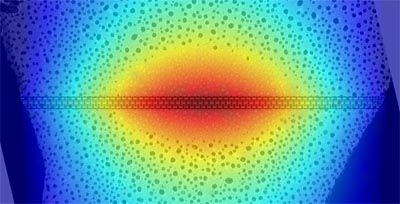
|
A hot nanotube device with modeled temperature overlay and wireframe nanotube model. Wireframe Art (TIFF 3.1 MB) |
Acknowledgements
This work was supported by the Director, Office of Energy Research, Office of Basic Energy Sciences, Materials Sciences and Engineering Division, of the U.S. Department of Energy under contract No. DE-AC02-05CH11231. AZ acknowledges support from the Miller Institute for Basic Research in Science. BK acknowledges support from a National Defense Science and Engineering Graduate Fellowship.
References
Probing Nanoscale Solids at Thermal Extremes, G. E. Begtrup et al. Phys. Rev. Lett. 99, 155901 (2007)
